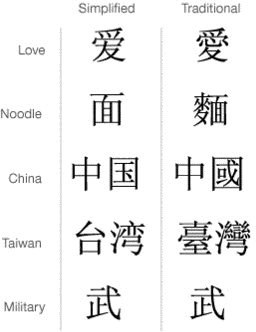by Hanan Lee
China figures massively on the Internet. It has the largest population of online users in the world so far (reported to be 721 million people in 2016), supported by the largest and most promising economy in the world. That's literally a million more opportunities to sell for the enterprising website owner, but only if you can get your message across in Chinese.
Saying it "in Chinese"? For those of us who don't know it yet, there are about seven dialects within mainland China to choose from, each with several sub-dialects. And then there's the cultural difference between mainland China and Chinese immigrants to neighboring Asian countries. Which Chinese group are you planning to target – therefore, which dialect? Will it be Cantonese, Mandarin, Hokkien, Hunanese, Hainanese, Shanghainese, or Changsa (just to name a few)?
In case you're unsure, or you'd like to reach as many Chinese consumers as possible, your default answer should be Standard Mandarin Chinese.
"Why not Cantonese?" you ask. "Isn't it just as prevalent as Mandarin?"
Not really. Cantonese is spoken mostly by people from the southern Canton province, Hong Kong and Macau. It so happens that Cantonese speakers have a long history of immigrating to other countries more often than other groups, giving rise to the perception that the Chinese speak Cantonese more often.
Standard Mandarin, on the other hand, has been the official national language of China for the past 100 years, and is taught and used as a common language all throughout the mainland and in Chinese communities in other countries.
Many of those who speak Hokkien dialects or Cantonese can also understand Standard Mandarin. Historically speaking, Mandarin (of which there are at least 30 sub-varieties) has long been the main variety of Chinese spoken in northern China, including the capital of Beijing; the national language we now call Standard Mandarin was based on Beijing Mandarin.
"Great," you say. "So how do I translate my website to Standard Mandarin?"
First, you need to know how Standard Mandarin is written, for it could affect your website's entire layout.
There are two ways of writing the language: the traditional way, or the simplified form. Simplified Chinese characters were promoted starting in 1950s by the Chinese government as part of a literacy campaign, and are now in place as a sort of global standard for writing Mandarin Chinese.
The traditional characters are used in Hong Kong and Macau, and mainly in Taiwan and Chinese communities overseas, except in Singapore, where simplified characters are used. But readers of traditional characters can also read the simplified form, so you're better off using this newer system of writing.
But how many letters are there in the Chinese alphabet? None! The Chinese writing system doesn't consist of letters corresponding to spoken sounds, but of characters representing syllables.

So a sentence in English, when translated to Standard Mandarin, will very likely look physically shorter onscreen than it used to. In addition, the default way of writing Chinese script in China is from left to right in horizontal lines. In Taiwan it is often writing from right to left in vertical columns, and occasionally on signs and headlines it is written from right to left horizontally.
In short, translating your website into something the Chinese can read could mean a complete, exhausting overhaul of its design, so be prepared. You should hire a translation agency capable of working with your web designer to ensure that your site's new Chinese version reads and looks just as inviting to those 721 million new users out there as the present site.
Information about Mandarin | Phrases | Numbers | Colours | Family words | Terms of endearment | Time | Weather | Tongue twisters | Tower of Babel | Articles | Links | Learning materials
Hanan Lee is a translation coordinator with Translation Services Singapore. He enjoys working with various native translators who sometimes educates him on the cultural nuances of their language – allowing for a richer and deeper appreciation of the translated text.
Writing systems | Language and languages | Language learning | Pronunciation | Learning vocabulary | Language acquisition | Motivation and reasons to learn languages | Arabic | Basque | Celtic languages | Chinese | English | Esperanto | French | German | Greek | Hebrew | Indonesian | Italian | Japanese | Korean | Latin | Portuguese | Russian | Sign Languages | Spanish | Swedish | Other languages | Minority and endangered languages | Constructed languages (conlangs) | Reviews of language courses and books | Language learning apps | Teaching languages | Languages and careers | Being and becoming bilingual | Language and culture | Language development and disorders | Translation and interpreting | Multilingual websites, databases and coding | History | Travel | Food | Other topics | Spoof articles | How to submit an article
[top]
You can support this site by Buying Me A Coffee, and if you like what you see on this page, you can use the buttons below to share it with people you know.

If you like this site and find it useful, you can support it by making a donation via PayPal or Patreon, or by contributing in other ways. Omniglot is how I make my living.
Note: all links on this site to Amazon.com, Amazon.co.uk
and Amazon.fr
are affiliate links. This means I earn a commission if you click on any of them and buy something. So by clicking on these links you can help to support this site.
[top]